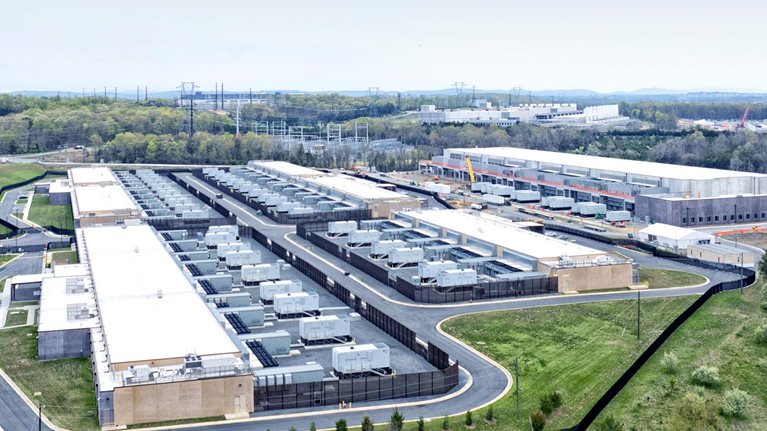Since the early 2010s, the rise of cloud technology has led to an ever-increasing number of companies moving significant portions of their digital assets, services, and applications to cloud-based environments, securing significant benefits in terms of cost, resilience, agility, and the pace of innovation.1
According to recent research, more than 95 percent of enterprise organizations have a cloud footprint, and the proportion of enterprise workloads in the public cloud has increased from 32 percent in 2018 to 52 percent in 2025.2 Among cloud service providers, a small number of large hyperscalers have become an increasingly popular choice and now represent two-thirds of the public cloud market. They stand out through the virtually infinitely scalable cloud and storage resources they offer—increasingly required to run the latest high-performance technologies such as agentic AI—as well as extensive platform services that developers and engineers leverage.
As organizations embark on their cloud journeys, the vast majority will lack the technical skills, expertise, and capacity to build and operate hyperscaler cloud environments on their own. As a result, a global ecosystem of more than 500,000 partners has emerged to deliver essential services such as reselling, deploying, tailoring, optimizing, managing, and driving adoption of these scalable technologies.
Tech investors across Europe have a critical role to play in financing the development of these partner ecosystems, with attractive opportunities to capitalize on hyperscalers’ growth momentum and generate outperforming returns by selecting and driving the acceleration of leading partners. This article explains the symbiotic relationship between hyperscalers and their partner ecosystems and shows how winning strategies can help savvy investors ride the hyperscaler wave.
The symbiotic relationship between hyperscalers and partner ecosystems
By introducing new technologies, optimizing operations, and scaling the underlying infrastructure, cloud services providers can deliver infrastructure and platform services with more resilience, foster more innovation, and enable more agility than traditional on-premises infrastructure that corporate IT departments run, including unlocking critically required infrastructure to run agentic AI use cases at scale.
The sector is growing exponentially and benefits from secular AI tailwinds. In fact, a 2024 McKinsey report identified the cloud as one of 18 future arenas of competition that together could yield $29 trillion to $48 trillion in revenues by 2040.3 Public cloud consumption alone has increased from approximately $90 billion in 2019 to $335 billion in 2024, and the industry could generate anywhere from $1.6 trillion to $3.4 trillion in revenue by 2040.
In this environment of rapid growth, a small number of hyperscalers have emerged, composing approximately two-thirds of the public cloud market, each supported by extensive libraries of platform-as-a-service tools integrated natively with infrastructure as a service, virtually infinitely scalable infrastructure, and rapid pace of innovation.
While hyperscalers focus on providing best-of-kind, highly flexible, and adaptable cloud technology, they crucially rely on partners as their outsourced go-to-market and last-mile-delivery arm, allowing them to scale faster. The most prominent hyperscalers have deliberately developed leading ecosystems collectively comprising more than 500,000 partners globally, all of which benefit from hyperscalers’ growth momentum. On this point, for every $1.00 spent by end customers on recurring cloud consumption, ecosystem partners can expect to capture $2.00 to $5.00 in project-based professional services revenue and $0.40 to $0.60 in recurring managed services and resell revenue.
Within these ecosystems, partners can play multiple complementary roles, with significant variations across cloud domains and the nature of services they offer.
- Independent software vendors build software solutions on top of hyperscaler cloud infrastructure or foundational solutions, typically addressing specific use cases or those not covered by broader hyperscaler solutions.
- Consulting partners focus on developing recommendations on cloud and AI adoption, including strategy, value identification, business cases, road maps, technology selection, business process engineering, training, and adoption services.
- Reselling partners (often called value-added resellers) act as indirect channels for hyperscalers, supporting end customers with hyperscaler procurement solutions and the ongoing management of contractual relationships.
- Services partners (including implementation partners or system integrators and managed services providers) focus on deploying and integrating hyperscalers’ technology within customers’ environments (such as cloud migration, data infrastructure implementation, or AI integration) as well as managing and optimizing the tech “run” through managed services.
Riding the hyperscaler wave: The opportunity for tech investors
The symbiotic relationship between hyperscalers and their partner ecosystems provides the backdrop for attractive investment opportunities capitalizing on hyperscalers’ growth momentum. In fact, since 2010, investment in hyperscaler ecosystems has been a key contributor to the 23-fold increase in European private capital in tech services (Exhibit 1).

Image description:
A line chart shows private capital investment in Europe for all sectors, software, and IT services, indexed such that 2010 = 100. In 2010, IT services investment was €0.7 billion, software investment was €4.8 billion, and investment across all sectors was €108 billion. In 2024, these figures increased by 23 times for IT services to €16 billion, 6 times for software to €29 billion, and 4 times to €430 billion for all sectors.
Source: “Unlocking value in IT services: A road map for private equity success,” McKinsey, June 25, 2025
End image description.
First, the nature of the relationship between hyperscalers and their partners provides direct exposure to powerful long-term technology trends for tech investors, typically accessible at attractive valuation multiples when compared with those commanded by tech vendors themselves (for example, software providers).
Second, the landscape of hyperscaler partners remains fragmented, presenting a number of actionable investment targets—for example, geographic or industry vertical champions or targeted at-scale specialists in specific cloud domains. There is also clear potential for alpha generation, with a number of potential top- and bottom-line pathways to create value.
Last, there are multiple exit opportunities for sponsors, public markets, and strategic investors (such as global or regional systems integrators) looking to bolster their capabilities in specific areas through targeted acquisitions.
Successfully executing on these opportunities can be challenging, especially for investors with limited experience in tech services. Our research shows that successful investors disproportionately share four core characteristics:
- Engineer early-mover conviction: Develop pattern recognition to drive investment committee focus on critical questions in rapidly moving environments. Tech investors can proactively develop knowledge of specific hyperscaler ecosystems, ideally as part of a dedicated tech services team. In turn, these teams can educate the investment committee over time, thus helping to build conviction around investable themes, creating a competitive edge in origination, and allowing them to preempt or get ahead on structured processes.
- Select the right platform: Target long-term cross-sell potential and service expansion. Picking the right initial core platform asset with a strong management team is an important early step. Although all hyperscaler ecosystem partners theoretically benefit from the same accelerated growth momentum, there are significant differences in intrinsic asset fundamentals and execution capabilities, ultimately driving different outcomes. Successful investors typically assess intrinsic asset potential through a robust diligence process, with a specific focus on critical business-model enablers.
- Roll out proprietary alpha playbook: Focus on a targeted set of mastered value creation levers, and consider bolt-on opportunities for multiple arbitrage. Successful investors also tend to focus on building deep capabilities around a targeted value creation playbook, driving value through a limited set of levers that potentially revolve around services portfolio expansion (including strategically pivoting toward AI-first services offerings), hyperscaler relationship building, go-to-market excellence (including verticalization and geo expansion), delivery excellence (including near-shoring), operating model optimization, and M&A. Targeted opportunities to acquire other typically smaller companies not only help companies accelerate growth but also build new capabilities. The fragmented nature of the space means there are a significant number of actionable targets for smaller, bolt-on acquisitions, with significant opportunities for multiple arbitrage.
- Plan early for a successful exit: Anticipate a preferred exit route considering strategic buyer profiles, and steer the growth journey accordingly. Potential exit routes can be identified from the onset, with the overall strategic positioning and prioritized value creation levers likely to condition the asset’s attractiveness. For example, strategic investors such as global systems integrators will likely value assets with highly sought-after specialist capabilities (such as in innovative cloud domains or scarce talent profiles) and a proven track record of serving enterprise clients at scale, driving high synergy potential with their existing business and client base.
Why selecting the right assets matters
Assessing tech services companies shows that winning hyperscaler services partners share a number of common characteristics (Exhibit 2). Although these characteristics can be developed and improved over time, sophisticated investors can look out for them as early signs of an asset’s initial potential, with specific areas of emphasis for hyperscaler services partners.4

Image description:
A table shows a multidimensional assessment that can help private equity investors determine whether IT companies can generate sustained returns. Assessment items are divided into four categories: what, who, where, and how. Considerations under the what category include tech stack, tech vendors, and services type, Considerations under the who category include customer size and industry vertical. Considerations under the where category include customer footprint and delivery footprint. Last, considerations under the how category include delivery model, go-to-market engine, talent, and M&A.
Source: Source: “Unlocking value in IT services: A road map for private equity success,” McKinsey, June 25, 2025
End image description.
Our research shows that tech investors typically look for the following qualities in ecosystem partners.
Compelling specialist offerings
Successful partners typically focus on a restricted set of domains aligned with hyperscalers’ priority growth areas, for which they have developed distinctive capabilities. This can lead to sticky—or reoccurring—relationships with customers who trust them with mission-critical workloads. These relationships can in turn act as an ideal platform for cross-selling future services as hyperscaler partners gain the agency and trust to guide customers through their broader cloud and AI journey. The presence of legacy services within the mix is not necessarily a signal of lower asset quality as long as it serves the purpose of an efficient cross-sell platform.
As an example, a European hyperscaler partner developed compelling hybrid cloud application platform capabilities by combining its historical expertise in building private cloud environments with advanced public cloud capabilities. This allowed the company to migrate and optimize applications in a true hybrid cloud offering, leveraging the full benefit of the hyperscaler’s tools. These specialist capabilities were key to securing strong recognition in the midmarket segment that the company was targeting, making it the trusted partner for multiyear cloud and AI migration road maps.
Strategic agility
In this context, agility refers to anticipating technology trends and pivoting capabilities by investing in fast-growth areas ahead of the revenue curve. Such areas can be aligned with hyperscalers’ road maps to benefit from accelerated growth momentum and increasingly include the ability for partners to develop agentic AI and related business process engineering capabilities. Hyperscalers can also leverage programmatic M&A to accelerate these pivots and to develop new capabilities, with particular attention needed for talent retention and efficient integration of bolt-on assets.
Some hyperscaler partners have been able to reinvent themselves multiple times after the onset of a partnership. An initial focus on reselling on-premises solutions can eventually shift to developing cloud professional and managed services. This allowed one company to gradually pivot from legacy on-premises implementation services to now standing at the forefront of traditional and agentic AI adoption, reflecting the core priorities and momentum of their hyperscaler partner.
Symbiotic hyperscaler relationships
It’s sometimes better for partners, especially smaller businesses, to dedicate themselves exclusively to a single hyperscaler ecosystem because this can result in less dilution of talent and a more concentrated go-to-market model, among other positive factors. Other partners are able to share a clear value proposition with multiple cloud providers, but success here hinges on whether they can navigate the risks properly and show a compelling segmentation of their workforce and service model that aligns incentives and demonstrates commitment to hyperscalers.
A hyperscaler engagement model can help strengthen the relationship between partners and hyperscalers. For example, one company developed an institutional coverage model, in which each role within the organization was mapped to its counterpart within the hyperscaler, with a deep understanding of their respective incentives and motivations. Local account executives engaged their sales counterparts on critical deals, marketing teams collaborated on events and campaigns around the latest tech releases, delivery teams shared feedback from the field with hyperscaler engineers and product teams, and senior leadership at both a national and an international level aligned on strategic priorities, with a core focus on AI technology adoption.
Delivery and accelerators excellence
Winning partners tend to strike a balance between delivery efficiency and effectiveness, leveraging services productization, advanced automation and AI enablement (including agentic AI), proprietary intellectual property (IP) accelerators, robust staffing mechanisms, and flexible delivery models to determine the appropriate mix of on-, near-, or offshore resources.
A prominent hyperscaler partner in Europe built a global center of excellence that was responsible for collecting, codifying, and productizing proprietary accelerators developed during customer engagements and tailoring them for specific industry use cases. By embedding these accelerators into end-to-end processes, the company was able to demonstrate advanced expertise in the hyperscaler’s technology; as a result, the company increased win rates and the efficiency of its delivery model, generated customer-facing license revenue, and enhanced customer retention. In specific instances, it even ended up selling selected IP components to its hyperscaler partner to incorporate in its core technology stack.
Efficient go-to-market model
Winning partners typically operate efficient go-to-market models, with strong standalone lead generation capabilities to complement potential hyperscaler referrals, verticalized sales motions, and strong account management capabilities. These models are typically focused on top customers and C-suite-level relationships that drive a significant proportion of revenue for partners.
As an example, a European hyperscaler partner targeting midmarket customers adopted a successful subvertical go-to-market approach. Looking into the company’s records, it identified a meaningful presence of certain subverticals (such as housing associations and recruitment firms) with successful case studies. Rather than diluting its go-to-market effort across sectors indiscriminately, it focused proactively on these subverticals and developed dedicated sales collaterals, leveraging existing customers as referrals, as well as a systematic analytics-based customer targeting approach, helping to accelerate new bookings.
Leading talent
It can be important to display an enticing and scalable talent model that attracts, develops, and retains highly sought-after hyperscaler talent.5 There are a number of ways to do this. First, a good mix of acquisition entails attracting junior talent (such as university partnerships) as well as more-experienced profiles with back-and-forth hiring from hyperscalers. Second, a strong employer brand and value proposition, such as good benefit packages, mobility, and culture, can help with development. And third, attractive career paths, including moving from managed services to professional services, can help retain employees.
One European hyperscaler partner developed a partnership scheme with a local university’s master’s program. In doing so, the two organizations jointly defined and delivered the curriculum alongside the university’s faculty, boosting job prospects of graduates through hands-on training while guaranteeing privileged access as a leading employer to the best local graduate talent.
The momentum for cloud and AI journeys is only increasing—and the time to invest in developing partner ecosystems is now. Navigating the right relationships between hyperscalers and partner ecosystems can feel as endless as an ocean. Finding and riding the hyperscaler wave requires a winning strategy, and understanding which characteristics are most attractive to tech investors is likely the best place to start.


